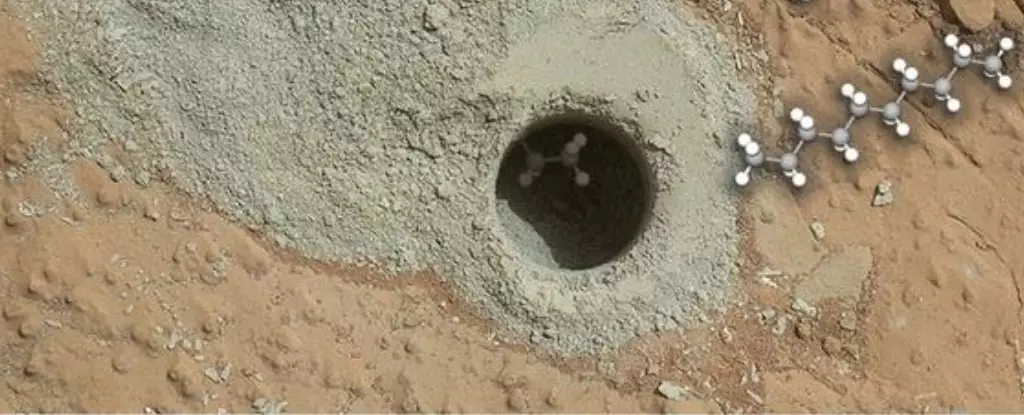In a significant stride towards unlocking the mysteries of Mars, scientists have uncovered chains of carbon atoms, up to a dozen, at what appears to be an ancient lakebed on the red planet. This finding is not just another piece of scientific data; it serves as a tantalizing glimpse into a potentially vibrant history of life on Mars. Conducted by NASA’s Curiosity rover, this monumental research, spearheaded by Caroline Freissinet of the French National Centre for Scientific Research (CNRS), brings us face to face with the haunting question: Were we alone in our quest for life beyond Earth, or was there once a living tapestry woven into the Martian landscape?
The Purpose Behind the Curiosity Rover’s Exploration
The primary mission of Curiosity involves exploring Gale Crater, an area rich in sedimentary rocks. The rover’s journey is not only a mechanical exploration but embodies humanity’s intrinsic desire to connect with the cosmos. The Martian surface has always beckoned scientists with promises of hidden secrets, and this latest discovery proves that we are equipped to delve deeper into the planet’s ancient chemistry. Curiosity’s slow trudge across this alien terrain brings it into contact with compounds that stir the imagination, pointing towards biosignatures that could significantly reshape our understanding of life itself.
Utilizing advanced analytical techniques, the scientific team employed a chemical enhancer during their studies, which involved heating samples taken from a mudstone deposit known as Cumberland to extreme temperatures. The results were nothing short of remarkable; they identified several long carbon chains, including decane, undecane, and dodecane. These findings thrust the subject of Martian life into the limelight, igniting both excitement and debate within the scientific community as to their origins.
Organic Compounds: Nature’s Dual Identity
Despite the alluring nature of these organic compounds, it’s vital to approach their existence with a judicious skepticism. The carbon chains could just as easily arise from abiotic processes, or chemical reactions devoid of life. The challenge lies not merely in their detection but in discerning their source—was it a mechanical reaction or a biological influence? This dichotomy underlines the potential for future explorations that pivot away from bias and preconceived notions.
Draw parallels to Earth, where organic compounds and carboxylic acids are quintessential markers of life’s biochemical processes. Just as biochemistry flourishes here, the possibility that similar phenomena occurred on Mars toys with our imaginations, hinting at a cosmos rich with life’s potential forms. The fact that Mars exhibits these complex compounds invites speculation—not merely from scientists but from the entirety of a curious humanity, eager to envision ourselves among the stars.
Long-term Implications for Future Missions
What’s particularly compelling is how this discovery may lay the groundwork for future missions aimed at probing deeper into Martian soil where water might still exist. While we have only begun to scratch the Martian surface—both literally and metaphorically—this initial data sets a precedent for more thorough investigations into the planet’s ancient biosphere. Each new piece of evidence paves the way for more insightful research, coalescing around the ethical necessity of seeking life beyond Earth.
Evidently, the interplay between abiotic and biotic chemistry will require us to refine our explorative techniques, shaping future missions with comprehensive strategies. While the quest for extraterrestrial life navigates through layers of scientific ambiguity, the thrill of discovery, as palpable as the carbon compounds identified, should not be understated.
The Imperative of Wondering About Life in the Universe
In our relentless quest for knowledge, we cannot ignore the emotional weight of these findings. The existence of carbon chains on Mars activates a profound sense of wonder and optimism amid the scientific community and beyond. With a graceful entwining of speculative biology and hard evidence, these discoveries beckon us with relentless curiosity. As we ponder the existence of Martian life forms, we engage not only in scientific enquiry but also in an exploration of what it means to be human—our relentless drive to connect with something greater than ourselves.
As the narrative unfolds, we find ourselves at the thrilling intersection of science and wonder, poised at the brink of new and uncharted territories within our universal exploration.

